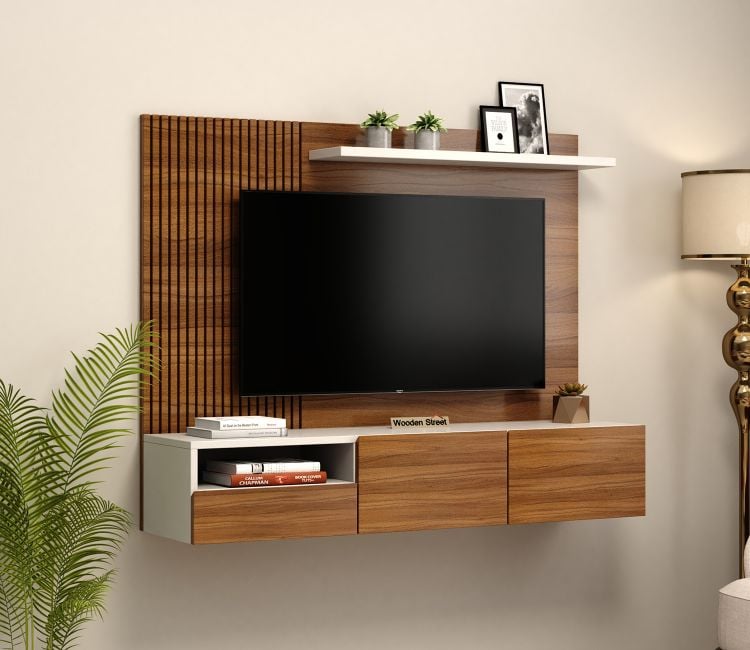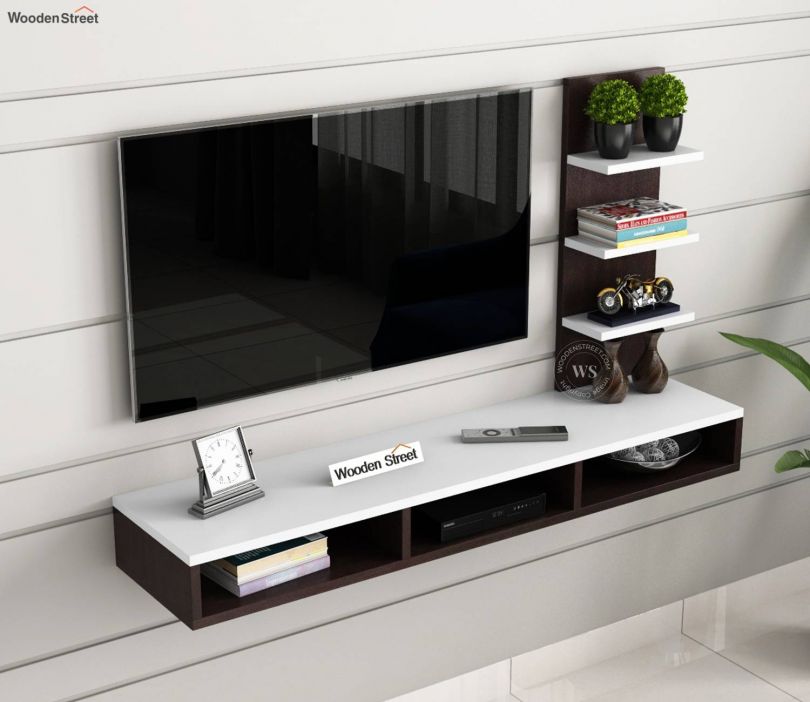
TV panels have evolved beyond their traditional role of holding televisions in place. Today, they are integral elements of interior design, combining aesthetics and functionality to elevate the look of any room. Whether you are revamping your living room, bedroom, or entertainment space, choosing the right TV panel is essential for enhancing the décor while ensuring practicality. In this guide, we will walk you through the different types of TV panels, their features, and how to select the perfect one for your space.
1. Understanding TV Panel Designs
TV panels are available in various designs, from simple, minimalistic styles to more elaborate and decorative options. When selecting a TV panel, it is important to consider how it complements your room’s existing décor while offering storage and cable management solutions.
a. Wall-Mounted TV Panels
Wall-mounted panels are a popular choice for modern homes due to their sleek appearance and space-saving capabilities. These panels allow the TV to be affixed directly to the wall, leaving the floor space free for other furniture. Wall-mounted panels often come with integrated storage for media players, gaming consoles, and sound systems, which helps keep clutter to a minimum.
b. Free-Standing TV Panels
Free-standing TV panels act as both entertainment centers and TV stands. They typically come with ample storage space for DVDs, books, and décor items, making them ideal for living rooms or larger spaces. Free-standing panels are versatile and can be moved easily, which makes them a flexible option if you frequently rearrange your room.
c. Floating TV Panels
For those who love a minimalistic look, floating TV panels are an excellent choice. These panels are mounted on the wall but give the illusion of floating due to their streamlined design. With concealed storage and cable management systems, floating TV panels offer a clean and modern aesthetic.

2. Choosing the Right Material
The material of your TV panel plays a key role in determining its durability, appearance, and overall impact on the room’s design. Here are some of the most commonly used materials:
a. Wood
Wooden TV panels are classic and timeless. They come in various finishes, including oak, walnut, and teak, and can fit into both traditional and contemporary spaces. Wooden panels add warmth and richness to a room, making them a great choice for cozy living areas or bedrooms.
b. Metal
For a more industrial or modern look, metal TV panels are a fantastic option. These panels are durable and offer a sleek finish that works well with minimalist or urban-style interiors. However, they may lack the warmth of wood, so it is important to balance them with other soft furnishings.
c. Glass
Glass TV panels offer a luxurious, high-gloss look. They can be transparent or tinted, and their reflective surface helps make small rooms appear larger. However, glass panels require more maintenance to keep them smudge-free, so they are best suited for low-traffic areas like bedrooms.
3. Functionality Meets Aesthetics
When selecting a TV panel, it is important to ensure that it is not only stylish but also functional. Modern TV panels offer features that enhance convenience and practicality:
a. Cable Management
No one likes the look of tangled cables hanging from their TV. Most TV panels now come with built-in cable management systems that help hide unsightly cords, keeping your setup neat and tidy.
b. Storage Solutions
Consider how much storage you need for your media devices, remotes, DVDs, or gaming equipment. Many TV panels offer shelves, cabinets, and drawers, providing ample space to store all your accessories while keeping them within easy reach.
c. Lighting Features
Some TV panels come with built-in LED lighting that creates a sophisticated ambiance. This feature is especially useful in bedrooms or living rooms where mood lighting enhances the atmosphere while watching movies or shows. Additionally, soft backlighting behind the TV helps reduce eye strain during extended viewing sessions.
4. TV Panel Design for Specific Rooms
While TV panels are versatile and can be used in any room, each space has its unique requirements. Here’s how to choose the right TV panel based on the room:
a. Living Room
In the living room, TV panels often serve as the focal point of the space. Opt for a design that is not only functional but also visually striking. A wall-mounted or free-standing TV panel with sufficient storage for media equipment and décor items will create a well-balanced and aesthetically pleasing entertainment center.

b. Bedroom
For the bedroom, you may want a more minimalistic and space-saving design. A floating TV panel or a wall-mounted option with built-in storage works well here, as it keeps the room from feeling cluttered. Also, consider the keyword LED panel design for bedroom, which adds a touch of modern sophistication and creates a cozy environment perfect for relaxation.
c. Home Theater
In home theaters, you can experiment with more dramatic TV panel designs. Opt for a large, free-standing panel with plenty of storage for sound systems and media players. Adding lighting features or textured materials can enhance the immersive experience of your home theater setup.
5. TV Panel Installation Tips
Before installing your TV panel, keep the following considerations in mind to ensure a smooth process:
- Measure your space: Ensure that the panel fits your room and leaves enough space around the TV for ventilation.
- Consider viewing height: Mount the TV at eye level when seated for comfortable viewing.
- Secure mounting: If you are opting for a wall-mounted or floating TV panel, make sure it is securely fastened to the wall, especially if your panel is heavy.
Conclusion
A stylish and functional TV panel can transform any room into a chic, organized, and entertainment-ready space. Whether you are looking for a simple floating panel or a large entertainment center with multiple storage options, there is a design out there that perfectly suits your needs and décor style. Remember to prioritize both aesthetics and functionality to ensure that your TV panel serves as a stunning centerpiece for your home.




